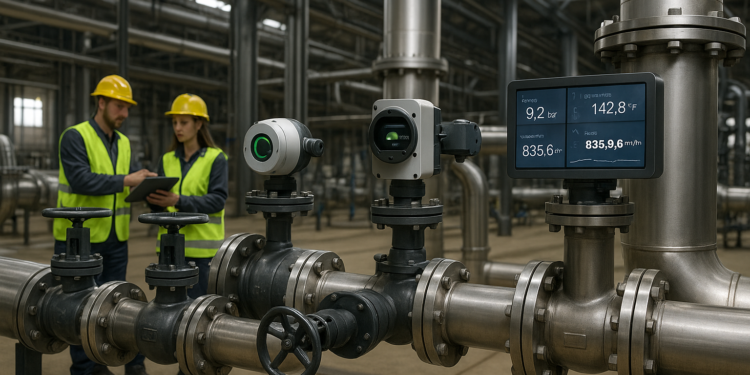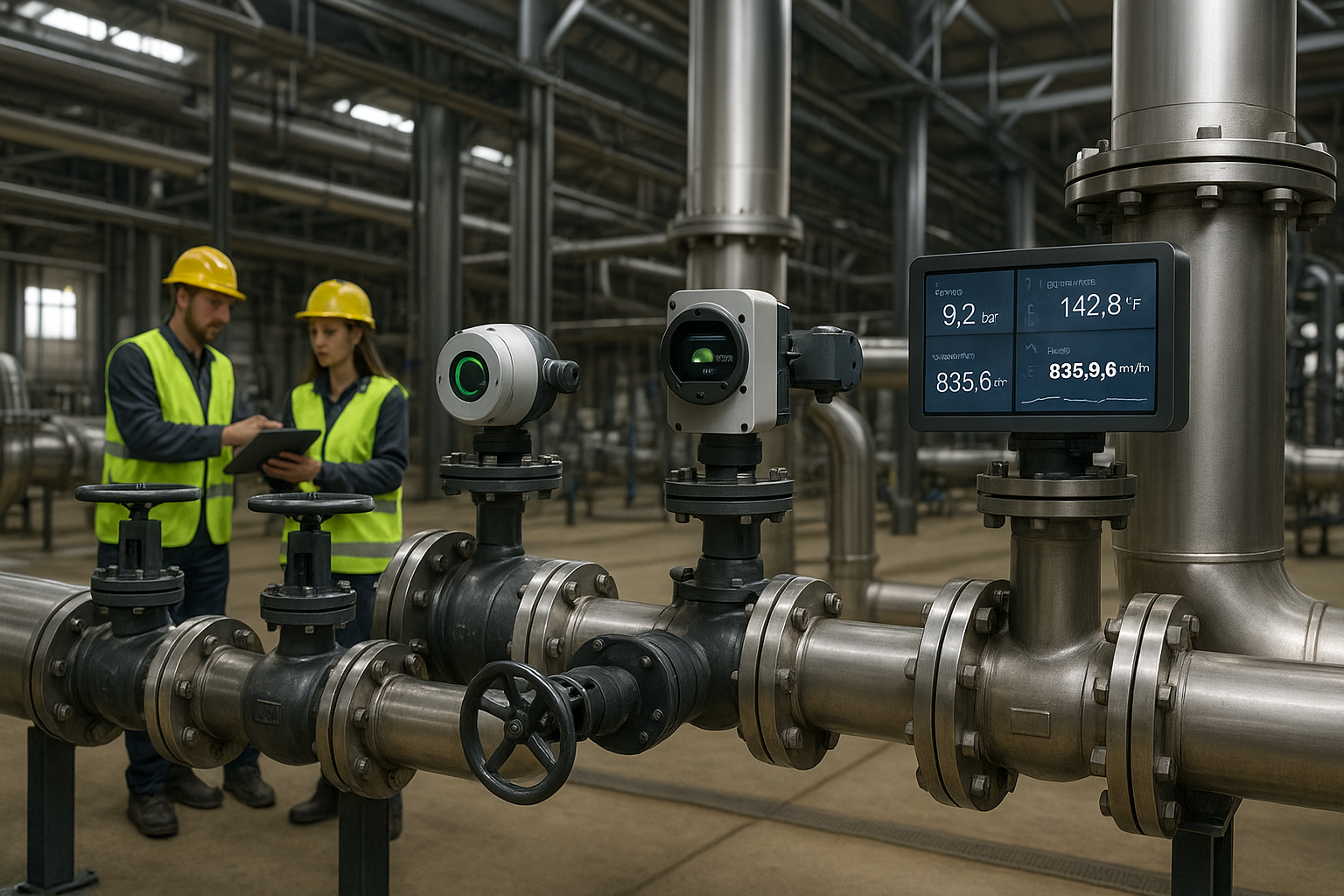How Industrial Valves Drive Safety and Efficiency in Key Sectors

Table of Contents
The Critical Role of Industrial Valves
Industrial valves serve as indispensable components in systems that transport, process, and manage liquids, gases, and slurries. Without these devices, controlling the flow of critical resources across complex networks would become nearly impossible, potentially leading to dangerous situations or complete operational breakdowns. From enormous oil refineries handling millions of gallons daily to power plants tasked with supplying electricity to entire cities, valves quietly manage the movement and direction of fluids, gases, and semi-solids. These devices regulate pressure, divert flows, and protect critical infrastructure by maintaining safe operational conditions within equipment such as pipelines and reactors. The importance of critical infrastructure valves becomes especially apparent in high-stakes applications, where system integrity and the prevention of hazardous events are non-negotiable for both safety and continued productivity.
Essential industries such as oil and gas, water treatment, power generation, and chemical processing depend on the functionality of industrial valves to control intricate networks of pipelines and fluid handling systems. They enable the isolation of piping sections for maintenance, flow modulation to meet demand, and quality control in detailed manufacturing processes. For example, preventing hazardous leaks in a chemical plant or ensuring smooth, steady pressure in a municipal water supply relies heavily on the reliability of industrial valves. The performance of these components underpins the safety and efficiency of the entire operations, as even minor valve malfunctions can escalate into damaging system failures or regulatory violations.
Enhancing Safety Through Valve Technology
Valves are frontline defenders against system failures and accidents, and their role in safety cannot be underestimated. Safety valves, such as pressure relief models, are engineered to vent excess pressure automatically, preventing catastrophic ruptures within reactors, boilers, or pipeline systems. For example, in steam generation facilities, a well-maintained safety valve can mean the difference between routine operations and a major explosion. In hazardous industrial settings like chemical processing, specialized valves are constructed from corrosion-resistant alloys or feature reinforced linings that enable them to withstand aggressive liquids or gases. This design keeps workers and surrounding communities safe by reducing the likelihood of hazardous leaks or accidental exposures.
Routine inspection and strict adherence to safety standards are essential for minimizing risks. Companies often establish regular maintenance schedules and safety checks to ensure all critical valves operate correctly and remain compliant with local and international safety regulations. This vigilance not only reduces liability but also minimizes the chances of plant downtime, equipment damage, and regulatory penalties. Advanced safety valves now incorporate diagnostic sensors and electronic monitoring systems, enabling facility managers to monitor valve performance remotely, detect issues proactively, and respond quickly to potential problems before they escalate.
Digital transformation is rapidly changing the landscape of industrial safety, giving rise to smart valve technologies. Smart valves are equipped with Internet of Things (IoT) sensors and digital controllers that continuously collect real-time data on parameters such as pressure, temperature, flow rate, and valve position. These intelligent devices empower plant operators to fine-tune entire systems from centralized control panels, optimizing throughput and reducing waste. For example, in water and wastewater treatment facilities, smart valves can automatically adjust flow and chemical dosing rates, ensuring consistent water quality while lowering reliance on human intervention and reducing energy consumption.
Process industries are further leveraging this trove of sensor data to enable predictive and preventive strategies that anticipate equipment issues, minimize unnecessary energy use, and boost asset longevity. Comprehensive digital integration of valves within computer-based plant management systems is ushering in a new era of operational transparency and efficiency.

Applications Across Key Industries
- Oil and Gas: Managing the flow of hydrocarbons in upstream and downstream operations, valves are critical to safe drilling, transportation, and refining. They ensure that crude oil, natural gas, and finished fuels can be routed, shut off, or diverted to different units as needed, maintaining the integrity of equipment and pipelines while allowing for rapid responses to changing process demands or emergencies.
- Water and Wastewater Treatment: These systems use valves to meter flow, isolate sections for maintenance, and adjust pressure, fostering water conservation and resource protection. Reliable valve operation is essential for preventing environmental contamination, optimizing the delivery of clean water, and ensuring efficient treatment processes that meet regulatory requirements for public health.
- Power Generation: Valves regulate steam and cooling medium in nuclear, thermal, and renewable energy plants, preserving system integrity and maximizing power output. The accuracy and reliability of these components play a direct role in preventing overheating, maintaining pressure balance, and enabling quick shutdowns or rerouting during outages or emergencies.
- Chemical Processing: Precision valves handle corrosive or abrasive media, ensure controlled reactions, and safeguard against dangerous release events. Proper valve selection allows manufacturers to maintain consistent product quality, minimize hazardous emissions, and protect workers, even when dealing with volatile or high-risk chemicals.
Advancements in Valve Materials and Design
Innovations in material science have ushered in a new era for valve technology, producing components capable of withstanding some of the harshest and most demanding operating environments in modern industry. Cutting-edge high-performance alloys are now formulated to resist metal fatigue and thermal stress, while technical ceramics offer exceptional hardness and wear resistance. Advanced polymers and composite materials are being strategically deployed to combat operational challenges such as extreme temperature fluctuations, sustained high pressures, and persistent exposure to abrasive or corrosive agents. These material advancements not only enhance durability but also improve resistance to chemical attack, erosion, and mechanical stress. As a result, valves maintain optimal performance for longer periods, significantly extending their operational lifespan. This, in turn, reduces the frequency of replacements, minimizes the overall risk of unplanned failures, and helps avoid costly downtime or safety incidents—both critical factors in industries where continuous operation is paramount.
Equally important are the design improvements that complement these material breakthroughs. Modern valves often incorporate low-friction seals to ensure a tight fit and long-lasting performance, even under continuous operation. Streamlined flow paths are engineered to optimize fluid dynamics, reducing turbulence and pressure drop for more efficient flow. Advanced actuation systems—whether pneumatic, electric, or hydraulic—offer greater control precision, faster response times, and improved energy efficiency. Many of today’s industrial valves are also specifically engineered for modular assembly, enabling quick installation, simplified integration into existing systems, and easy in-line maintenance without extended shutdowns. These design innovations collectively enhance operational efficiency, increase asset availability, and contribute to a more sustainable and cost-effective industrial process.
Predictive Maintenance and Operational Reliability
Predictive maintenance, powered by the analytical output from smart valve sensors, is revolutionizing how industrial facilities are managed. Operators can analyze data streams for early signs of wear and tear, such as vibration, abnormal sound frequencies, or performance fluctuations, and predict when a valve will likely fail. It allows for maintenance to be scheduled during planned downtimes instead of emergency breakdowns, saving both time and money, and greatly increasing workplace safety.
Artificial intelligence-driven platforms can now rapidly highlight trends in valve performance anomalies and flag them before they become critical. According to The Wall Street Journal, predictive analytics in equipment management can yield substantial reductions in maintenance costs while extending the life cycles of valuable assets throughout the plant.
Environmental Considerations and Sustainability
As environmental regulations grow stricter and public pressure for sustainability increases, industrial operators are increasingly turning to valves engineered with eco-friendly features. Modern valve designs help to reduce fugitive emissions, minimize leaks, and improve the overall energy efficiency of industrial systems, aiding companies in meeting local and international environmental standards. For example, in municipal water treatment plants, energy-efficient flow control valves and actuators limit water waste and lower energy use required for pumping and processing, directly contributing to better resource management and less environmental harm.
Many manufacturers are further reinforcing their sustainability commitments by designing valves from recycled materials, improving end-of-life recyclability, or utilizing manufacturing techniques that decrease their carbon footprint. These initiatives not only benefit the environment but also offer companies new opportunities to enhance their reputation and meet the demands of increasingly eco-conscious customers and regulatory bodies.
Conclusion
Industrial valves form the backbone of vital industries, from oil and gas production to water treatment, chemical processing, power generation, and manufacturing, by ensuring that fluid systems operate safely, sustainably, and efficiently under a wide variety of conditions. These precision-engineered components regulate flow, maintain pressure, and prevent leaks, often functioning under immense mechanical, thermal, and chemical stress. Without their reliable performance, entire production lines, distribution networks, and safety systems could be compromised.
Continued advancements in materials, smart technologies, and data-driven maintenance are positioning these devices as indispensable cornerstones of modern industrial infrastructure. High-performance alloys, corrosion-resistant composites, and specialized sealing technologies are extending service life and enhancing reliability, even in extreme environments. At the same time, the integration of smart sensors, real-time monitoring systems, and predictive analytics is transforming valve maintenance from a reactive process to a proactive strategy, allowing operators to anticipate wear, optimize performance, and avoid costly downtime.
By prioritizing robust valve selection, seamless integration into process systems, and rigorous servicing schedules, businesses can safeguard critical assets, streamline production workflows, and uphold the highest standards of operational safety. Moreover, these best practices contribute directly to long-term ecological responsibility by reducing energy waste, minimizing fluid losses, and preventing environmental contamination.
As these technological and operational trends continue to evolve, the humble industrial valve will only grow in strategic importance—shifting from a passive mechanical component to an active enabler of innovation, sustainability, and industrial resilience. In the decades to come, these devices will remain a foundation upon which both advanced manufacturing and global infrastructure depend, quietly ensuring that the flow of industry never stops.




